The Impact of Meteorological Conditions and Agricultural Waste Burning on PM Levels: A Case Study of Avellino (Southern Italy)
Abstract
:1. Introduction
2. Materials and Methods
2.1. Study Area
Meteorological Characterization
2.2. Data Sources
3. Results and Discussion
3.1. PM2.5 and PM10
3.2. Other Relevant Atmospheric Pollutants and Pearson Correlations
3.3. Meteorological Conditions Observed in September 2021
3.4. A Focus on the Case Study of 25 September 2021
4. Conclusions
Supplementary Materials
Author Contributions
Funding
Institutional Review Board Statement
Informed Consent Statement
Data Availability Statement
Acknowledgments
Conflicts of Interest
References
- Siciliano, T.; Siciliano, M.; Malitesta, C.; Proto, A.; Cucciniello, R.; Giove, A.; Iacobellis, S.; Genga, A. Carbonaceous PM10 and PM2.5 and secondary organic aerosol in a coastal rural site near Brindisi (Southern Italy). Environ. Sci. Pollut. Res. 2018, 25, 23929–23945. [Google Scholar] [CrossRef]
- Siciliano, T.; Giua, R.; Siciliano, M.; Di Giulio, S.; Genga, A. The morphology and chemical composition of the urban PM10 near a steel plant in Apulia determined by scanning electron microscopy. Source Apportionment. Atmos. Res. 2021, 251, 105416. [Google Scholar] [CrossRef]
- Cesari, D.; Genga, A.; Ielpo, P.; Siciliano, M.; Mascolo, G.; Grasso, F.M.; Contini, D. Source apportionment of PM2.5 in the harbour–industrial area of Brindisi (Italy): Identification and estimation of the contribution of in-port ship emissions. Sci. Total. Environ. 2014, 497–498, 392–400. [Google Scholar] [CrossRef]
- Cespi, D.; Esposito, I.; Cucciniello, R.; Anastas, P.T. Beyond the beaker: Benign by design society. Curr. Res. Green Sustain. Chem. 2020, 3, 100028–100029. [Google Scholar] [CrossRef]
- Miani, A.; Piscitelli, P.; Setti, L.; De Gennaro, L. Air quality and COVID-19: Much more than six feet. Evidence about SARS-CoV-2 airborne transmission in indoor environments and polluted areas. Environ. Res. 2022, 210, 112949. [Google Scholar] [CrossRef]
- Padoan, S.; Zappi, A.; Adam, T.; Melucci, D.; Gambaro, A.; Formenton, G.; Popovicheva, O.; Nguyen, D.L.; Schnelle-Kreis, J.; Zimmerman, R. Organic molecular markers and source contributions in a polluted municipality of north-east Italy: Extended PCA-PMF statistical. Environ. Res. 2020, 186, 109–587. [Google Scholar] [CrossRef]
- Pant, P.; Harrison, R.M. Estimation of the contribution of road traffic emissions to particulate matter concentrations from field measurements: A review. Atmos. Environ. 2013, 77, 78–97. [Google Scholar] [CrossRef]
- Piazzalunga, A.; Belis, C.; Bernardoni, V.; Cazzuli, O.; Fermo, P.; Valli, G.; Vecchi, R. Estimates of wood burning contribution to PM by the macro-tracer method using tailored emission factors. Atmos. Environ. 2011, 45, 6642–6649. [Google Scholar] [CrossRef]
- Navarro, K.M.; Kleinman, M.T.; Mackay, C.E.; Reinhardt, T.E.; Balmes, J.R.; Broyles, G.A.; Ottmar, R.D.; Naher, L.P.; Domitrovich, J.W. Wildland firefighter smoke exposure and risk of lung cancer and cardiovascular disease mortality. Environ. Res. 2019, 173, 462–468. [Google Scholar] [CrossRef]
- Bressi, M.; Sciare, J.; Ghersi, V.; Bonnaire, N.; Nicolas, J.B.; Petit, J.-E.; Moukhtar, S.; Rosso, A.; Mihalopoulos, N.; Féron, A. A one-year comprehensive chemical characterisation of fine aerosol (PM2.5) at urban, suburban and rural background sites in the region of Paris (France). Atmos. Chem. Phys. 2013, 13, 7825–7844. [Google Scholar] [CrossRef] [Green Version]
- Li, Z.; Guo, J.; Ding, A.; Liao, H.; Liu, J.; Sun, Y.; Wang, T.; Xue, H.; Zhang, H.; Zhu, B. Aerosol and boundary-layer inter-actions and impact on air quality. Natl. Sci. Rev. 2017, 4, 810–833. [Google Scholar] [CrossRef]
- Stirnberg, R.; Cermak, J.; Fuchs, J.; Andersen, H. Map-ping and Understanding Patterns of Air Quality Using Satellite Data and Machine Learning. J. Geophys. Res.-Atmos. 2020, 125, e2019JD031380. [Google Scholar] [CrossRef]
- Ervens, B.; Turpin, B.J.; Weber, R.J. Secondary organic aerosol formation in cloud droplets and aqueous particles (aqSOA): A review of laboratory, field and model studies. Atmos. Chem. Phys. 2011, 11, 11069–11102. [Google Scholar] [CrossRef]
- Tilt, B. China’s air pollution crisis: Science and policy perspectives. Environ. Sci. Policy 2019, 92, 275–280. [Google Scholar] [CrossRef]
- Li, X.; Ma, Y.; Wang, Y.; Wei, W.; Zhang, Y.; Liu, N.; Hong, Y. Vertical Distribution of Particulate Matter and its Relationship with Planetary Boundary Layer Structure in Shenyang, Northeast China. Aerosol Air Qual. Res. 2019, 19, 2464–2476. [Google Scholar] [CrossRef]
- Liu, B.; Ma, Y.; Shi, Y.; Jin, S.; Jin, Y.; Gong, W. The characteristics and sources of the aerosols within the nocturnal residual layer over Wuhan. China. Atmos. Res. 2020, 241, 104959. [Google Scholar] [CrossRef]
- Triantafyllou, A.G. PM10 pollution episodes as a function of synoptic climatology in a mountainous industrial area. Environ. Pollut. 2001, 112, 491–500. [Google Scholar] [CrossRef]
- Hassan, H.; Latif, M.T.; Juneng, L.; Amil, N.; Khan, M.F.; Yik, D.J.; Abdullah, N.A. Interaction of PM10 concentrations with local and synoptic meteorological conditions at different temporal scales. Atmos. Res. 2020, 241, 104975. [Google Scholar] [CrossRef]
- Fortelli, A.; Scafetta, N.; Mazzarella, A. Influence of synoptic and local atmospheric patterns on PM10 air pollution levels: A model application to Naples (Italy). Atmos. Environ. 2016, 143, 218–228. [Google Scholar] [CrossRef]
- Di Bernardino, A.; Iannarelli, A.M.; Casadio, S.; Perrino, C.; Barnaba, F.; Tofful, L.; Campanelli, M.; Di Liberto, L.; Mevi, G.; Siani, A.M.; et al. Impact of synoptic meteorological conditions on air quality in three different case studies in Rome, Italy. Atmos. Pollut. Res. 2021, 12, 76–88. [Google Scholar] [CrossRef]
- He, G.X.; Yu, C.W.F.; Lu, C.; Deng, Q.H. The influence of synoptic pattern and atmospheric boundary layer on PM10 and urban heat island. Indoor Built Environ. 2013, 22, 796–807. [Google Scholar] [CrossRef]
- DECRETO LEGISLATIVO 13 agosto 2010, n. 155. Available online: https://www.gazzettaufficiale.it/eli/id/2010/09/15/010G0177/sg (accessed on 6 June 2022).
- WHO 2021. Available online: www.who.int/news-room/fact-sheets/detail/ambient-(outdoor)-air-quality-and-health (accessed on 6 June 2022).
- Legambiente 2022. Available online: www.legambiente.it/rapporti-in-evidenza/malaria-di-citta/ (accessed on 7 March 2022).
- EU Council Directive 1999/30/EC of 22 April 1999 relating to limit values for sulphur dioxide, nitrogen dioxide and oxides of nitrogen, particulate matter and lead in ambient air. Off. J. Eur. Union 1999, L163, 41–60.
- Cucciniello, R.; Raia, L.; Vasca, E. Air quality evaluation during COVID-19 in Southern Italy: The case study of Avellino city. Environ. Res. 2021, 203, 111803. [Google Scholar] [CrossRef]
- Whiteman, C.D.; Muschinski, A.; Zhong, S.; Fritts, D.; Hoch, S.W.; Hahnenberger, M.; Yao, W.; Hohreiter, V.; Behn, M.; Cheon, Y.; et al. METCRAX 2006: Meteorological experiments in arizona’s meteor crater. Bull. Amer. Meteor. 2008, 89, 1665–1680. [Google Scholar] [CrossRef]
- Capozzi, V.; Cotroneo, Y.; Castagno, P.; De Vivo, C.; Budillon, G. Rescue and quality control of sub-daily meteorological data collected at Montevergine Observatory (Southern Apennines), 1884–1963. Earth Syst. Sci. Data 2020, 12, 1467–1487. [Google Scholar] [CrossRef]
- Capozzi, V.; Mazzarella, V.; De Vivo, C.; Annella, C.; Greco, A.; Fusco, G.; Budillon, G. A Network of X-Band Meteorological Radars to Support the Motorway System (Campania Region Meteorological Radar Network Project). Remote Sens. 2022, 14, 2221. [Google Scholar] [CrossRef]
- Levy Zamora, M.; Xiong, F.; Gentner, D.; Kerkez, B.; Kohrman-Glaser, J.; Koehler, K. Field and Laboratory Evaluations of the Low-Cost Plantower Particulate Matter Sensor. Environ. Sci. Technol. 2019, 53, 838–849. [Google Scholar] [CrossRef]
- He, M.; Kuerbanjiang, N.; Dhaniyala, S. Performance characteristics of the low-cost Plantower PMS optical sensor. Aerosol Sci. Technol. 2019, 54, 232–241. [Google Scholar] [CrossRef]
- Sayahi, T.; Butterfield, A.; Kelly, K.E. Long-term field evaluation of the Plantower PMS low-cost particulate matter sensors. Environ. Pollut. 2019, 245, 932–940. [Google Scholar] [CrossRef]
- Mei, H.; Han, P.; Wang, Y.; Zeng, N.; Liu, D.; Cai, Q.; Deng, Z.; Wang, Y.; Pan, Y.; Tang, X. Field evaluation of low-cost particulate matter sensors in Beijing. Sensors 2020, 20, 4381. [Google Scholar] [CrossRef]
- Zusman, M.; Schumacher, C.S.; Gassett, A.J.; Spalt, E.W.; Austin, E.; Larson, T.V.; Carvlin, G.; Seto, E.; Kaufman, J.D.; Sheppard, L. Calibration of low-cost particulate matter sensors: Model development for a multi-city epidemiological study. Environ. Int. 2020, 134, 105329. [Google Scholar] [CrossRef]
- Beckerman, B.; Jerrett, M.; Brook, J.R.; Verma, D.K.; Arain, M.A.; Finkelstein, M.M. Correlation of nitrogen dioxide with other traffic pollutants near a major expressway. Atmos. Environ. 2008, 42, 275–290. [Google Scholar] [CrossRef]
- Largeron, Y.; Staquet, C. The Atmospheric Boundary Layer during Wintertime Persistent Inversions in the Grenoble Valleys. Front. Earth Sci. 2016, 4, 70. [Google Scholar] [CrossRef]
- Stull, R.B. An Introduction to Boundary Layer Meteorology; Springer Science & Business Media: Berlin/Heidelberg, Germany, 1988; Volume 13. [Google Scholar]
- Salmond, J.A.; McKendry, I.G. A review of turbulence in the very stable nocturnal boundary layer and its implications for air quality. Prog. Phys. Geogr. 2005, 29, 171–188. [Google Scholar] [CrossRef] [Green Version]
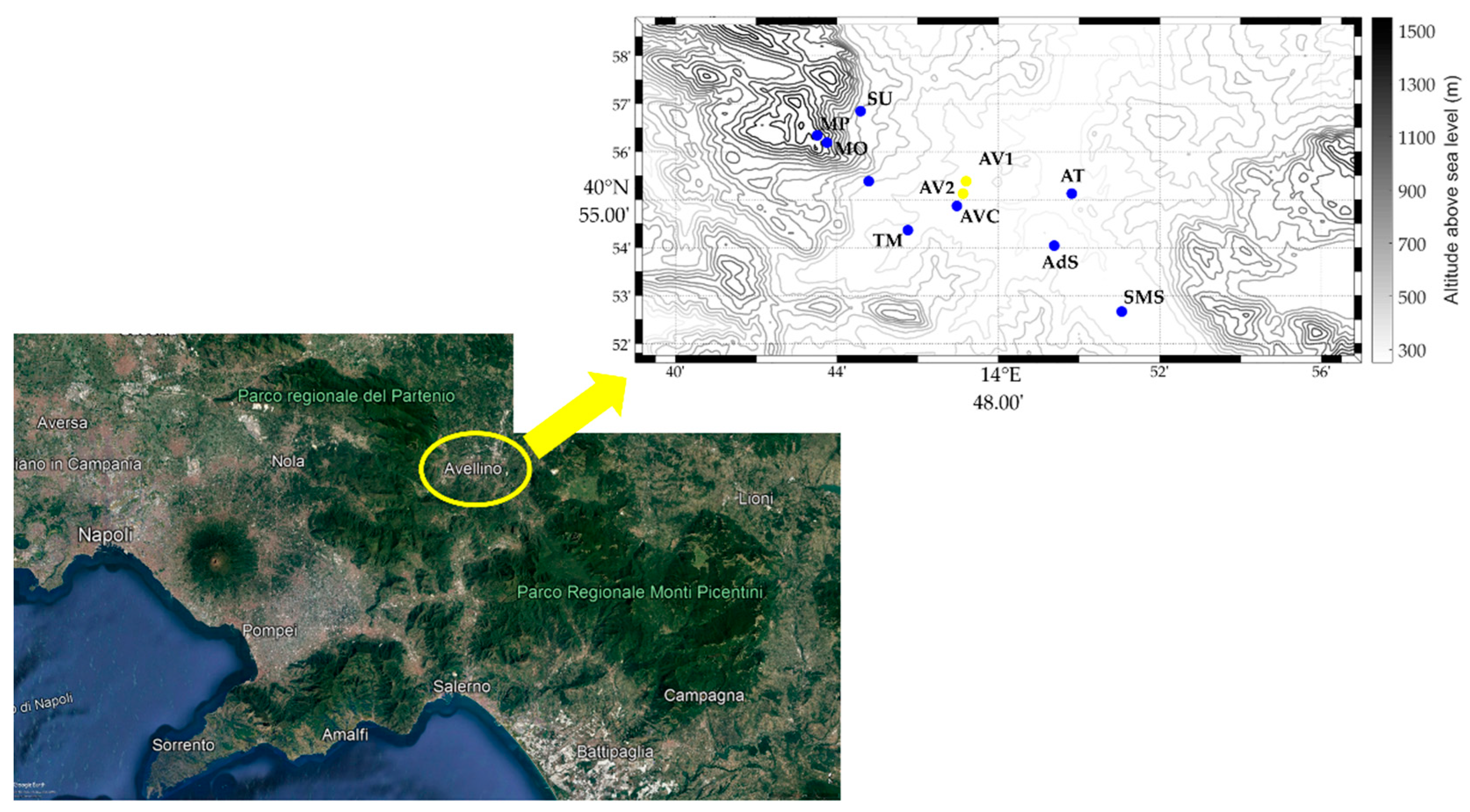



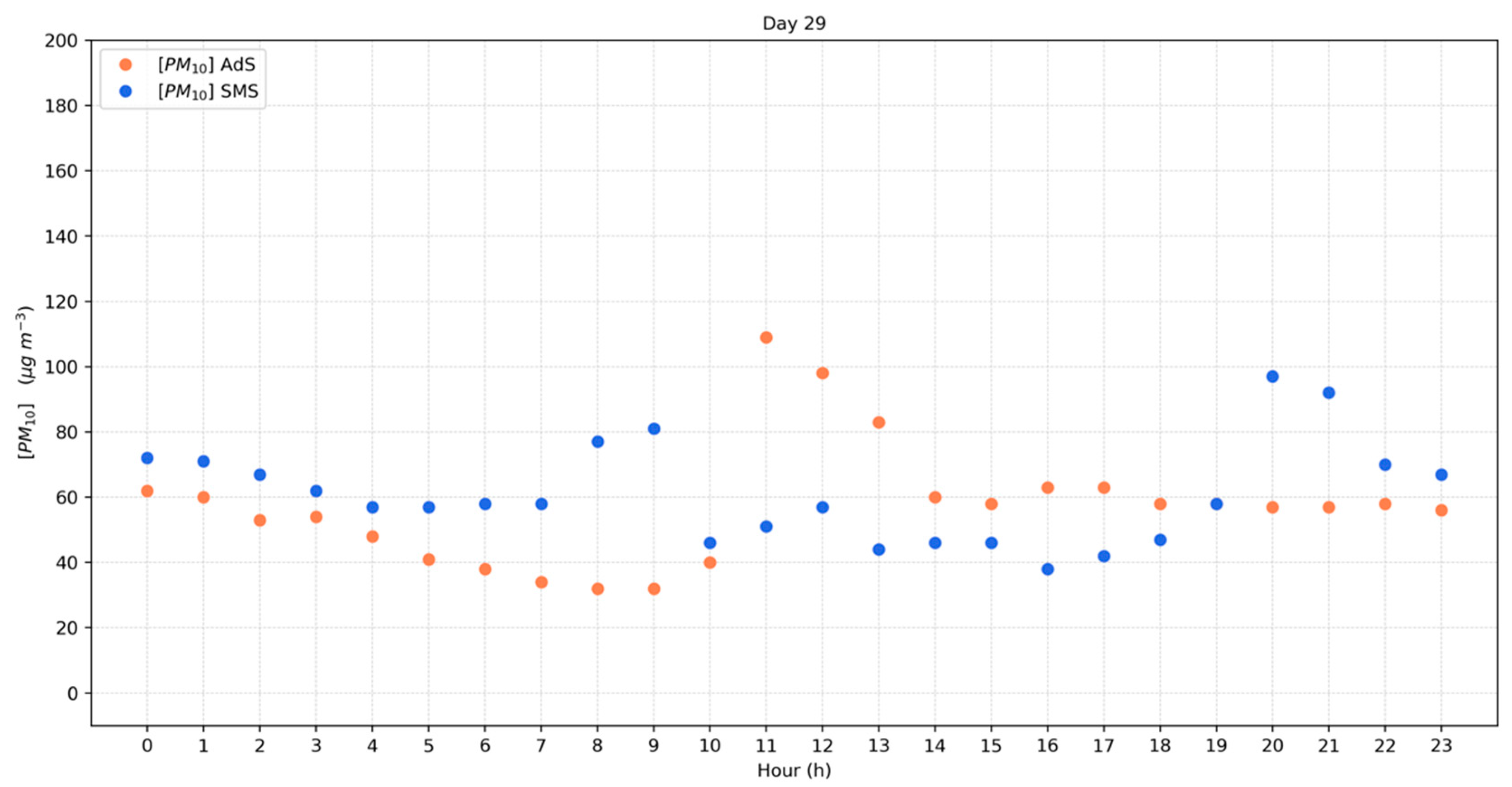

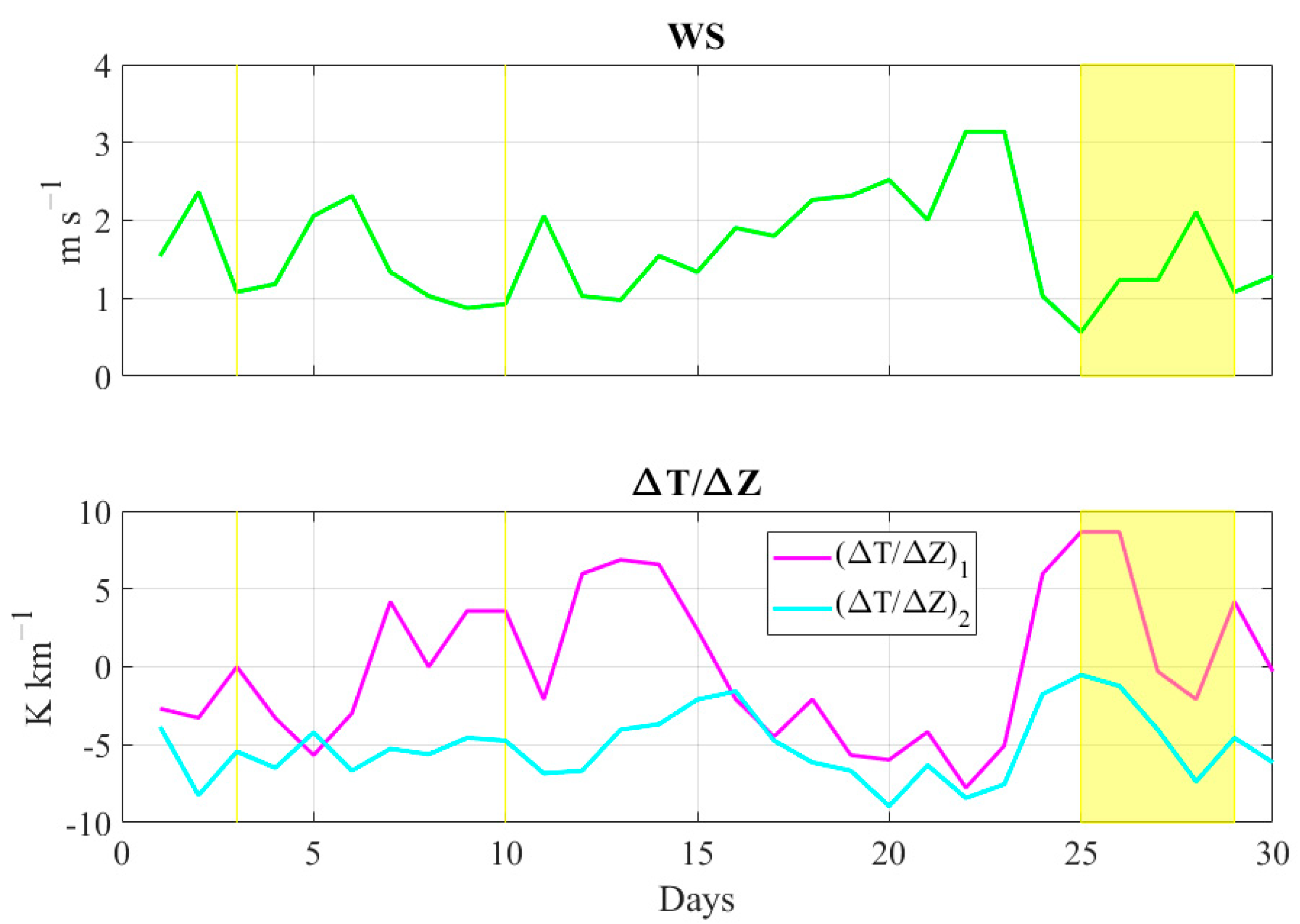
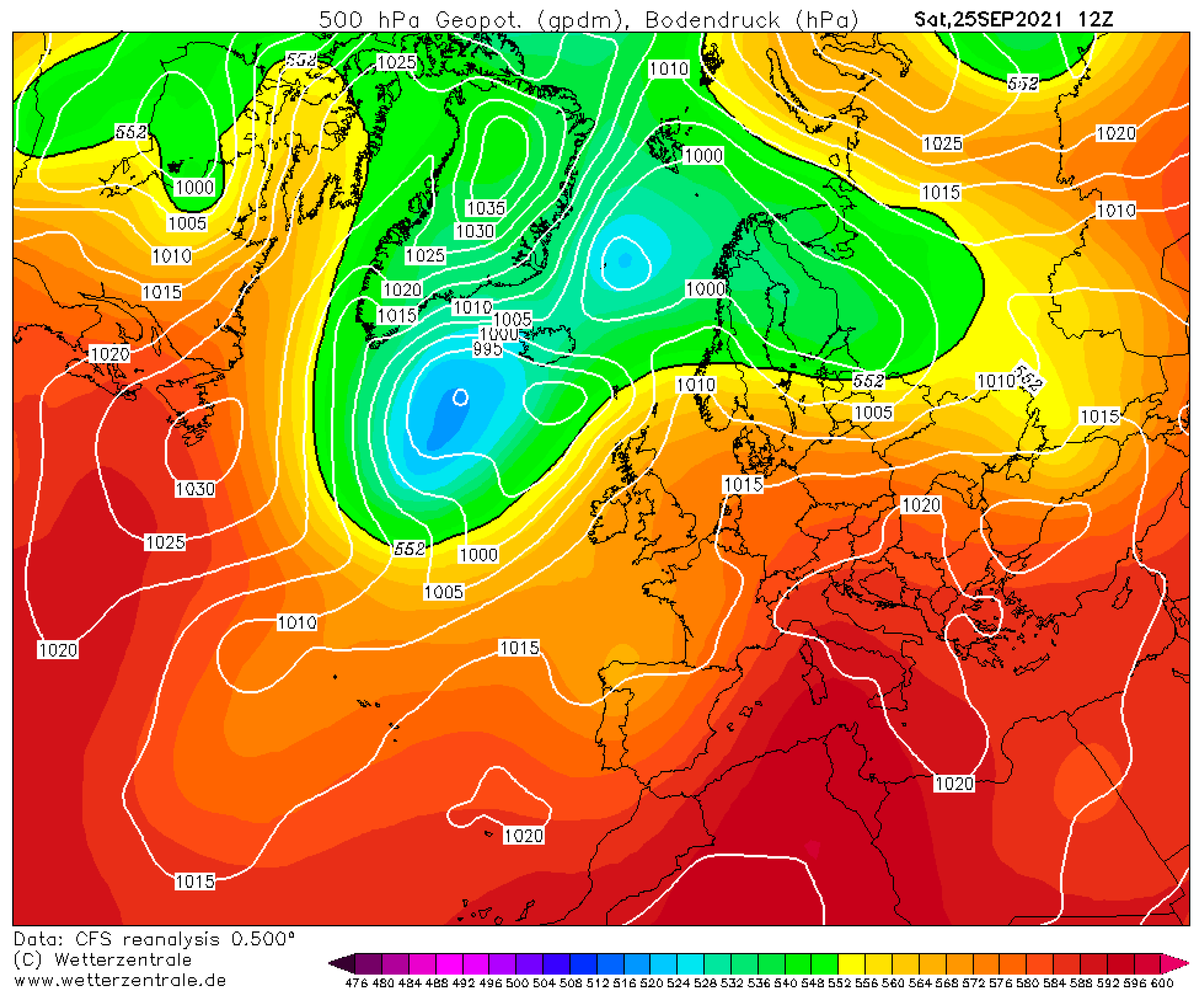
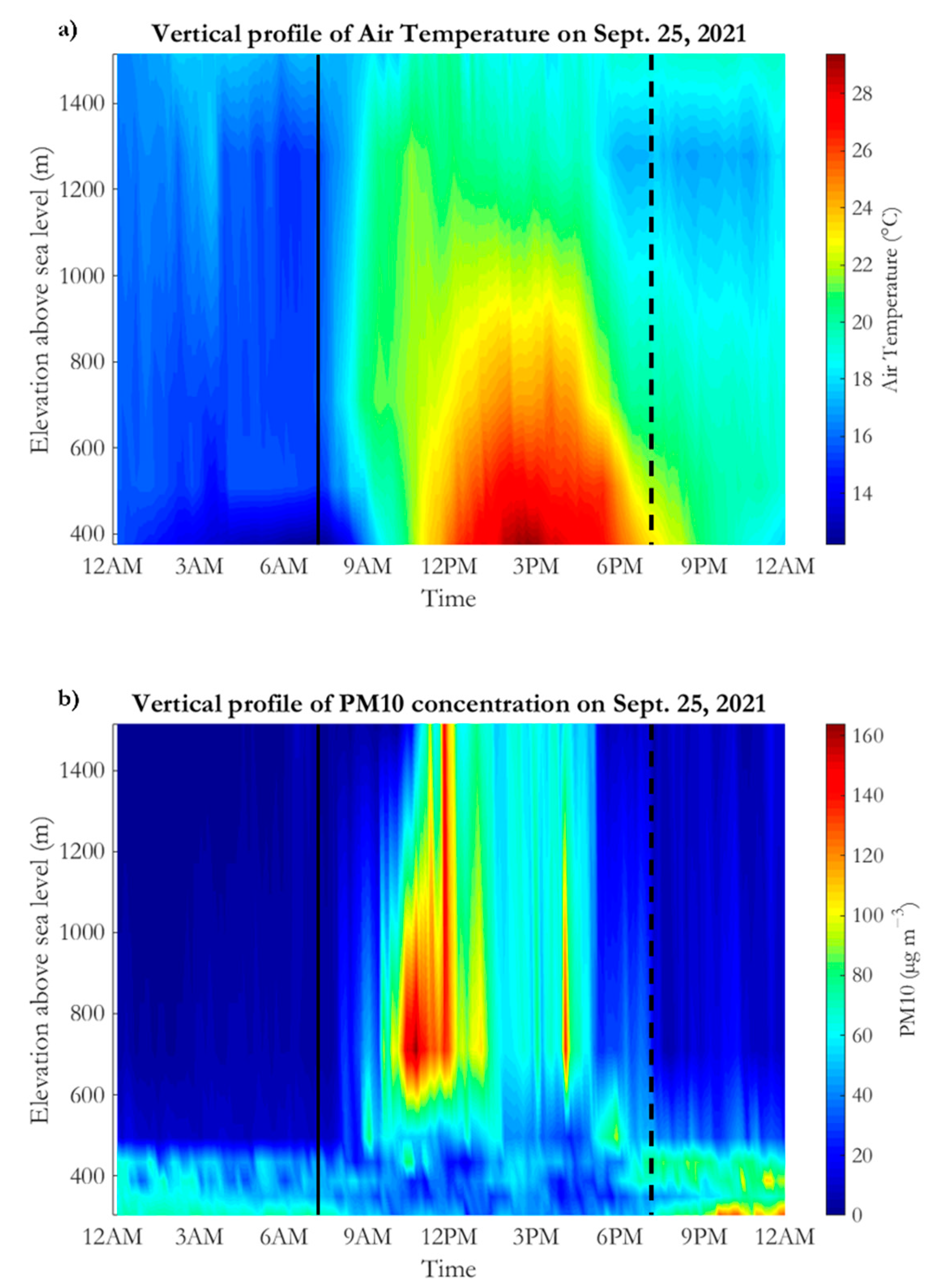
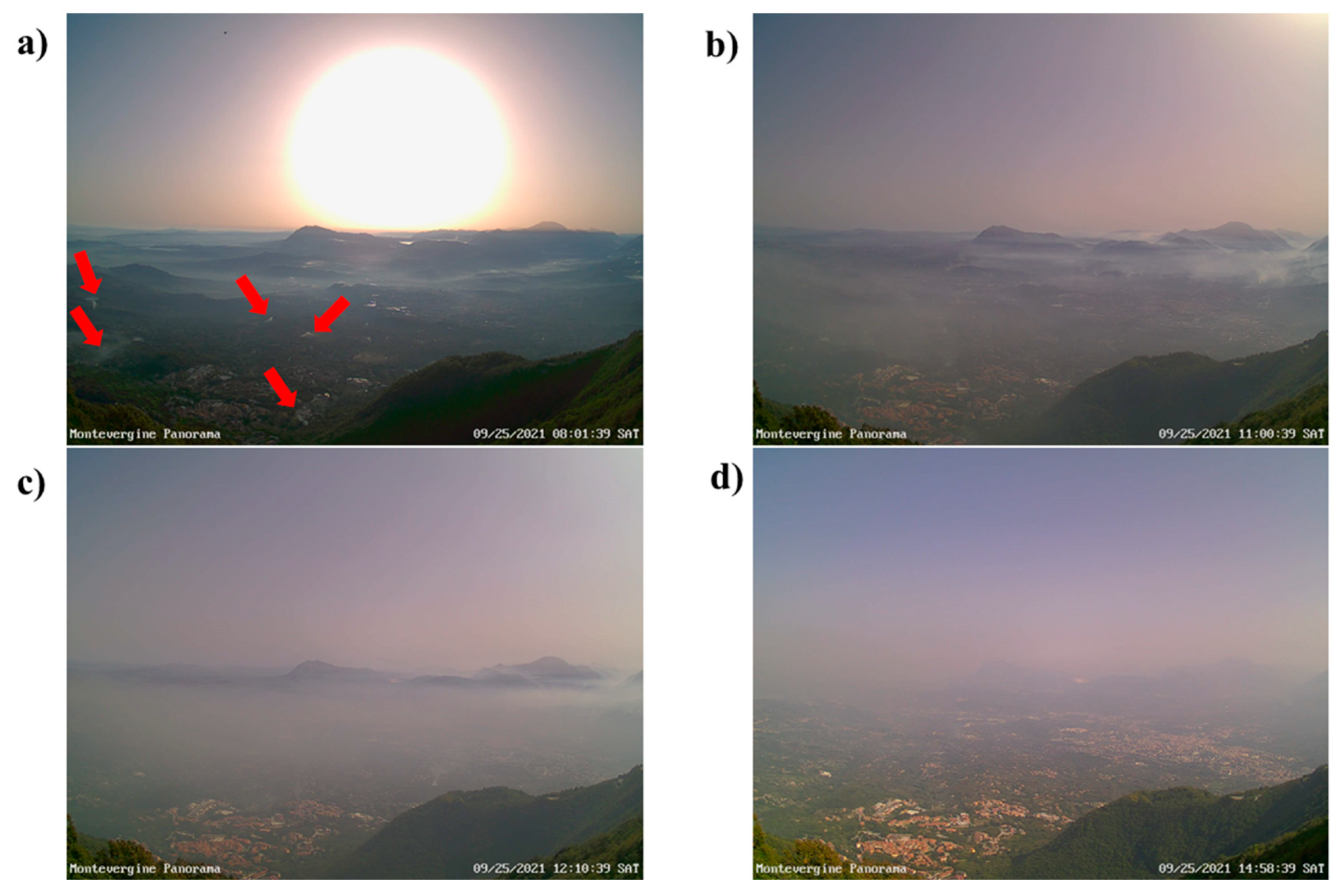
| Station | Geographical Coordinates | Altitude (a.s.l.) | Air Quality Station | Weather Station |
|---|---|---|---|---|
| Atripalda (AT)—AURA | 40°55′7.666″ N 14°49′49.332″ E | 303 m | X | |
| San Michele di Serino (SMS)—AURA | 40° 52′ 39.749″ N 14° 51′ 3.409″ E | 350 m | X | |
| Avellino, “School Dante Alighieri,” Via Piave (AV2)—ARPAC | 40° 55′ 07.4″ N 14°47′07.7″ E | 356 m | X | |
| Avellino, “School V Circolo” Via Oscar d’Agostino (AV1)—ARPAC | 40°55′23.1″ N 14°47′12.4″ E | 371 m | X | |
| Avellino, Via De Conciliis (AVC)—AURA | 40°54′52.204″ N 14°46′58.674″ E | 375 m | X | X |
| Torrette di Mercogliano (TM)—AURA | 40°54′21.816″ N 14°45′45.296″ E | 388 m | X | |
| Aiello del Sabato (AdS)—AURA | 40°54′2.509″ N 14°49′22.894″ E | 390 m | X | |
| Mercogliano (ME)—AURA | 40°55′23.102″ N 14°44′47.412″ E | 495 m | X | X |
| Summonte (SU)—AURA | 40°56′50.507″ N 14°44′35.343″ E | 710 m | X | X |
| Montevergine Observatory (MO)—AURA | 40°56′11.407″ N 14°43′44.94″ E | 1280 m | X | |
| Monte Partenio (MP)—AURA | 40°56′41.074″ N 14°43′43.25″ E | 1515 m | X | X |
| [PM2.5] AV1 | [PM2.5] AV2 | [PM10] AV1 | [PM10] AV2 | [NO2] AV1 | [NO2] AV2 | |
|---|---|---|---|---|---|---|
| [PM2.5] AV1 | 1 | 0.95 | 0.90 | 0.83 | 0.72 | 0.78 |
| [PM2.5] AV2 | 0.95 | 1 | 0.87 | 0.81 | 0.82 | 0.79 |
| [PM10] AV1 | 0.90 | 0.87 | 1 | 0.95 | 0.72 | 0.70 |
| [PM10] AV2 | 0.83 | 0.81 | 0.95 | 1 | 0.72 | 0.68 |
| [NO2] AV1 | 0.72 | 0.82 | 0.72 | 0.72 | 1 | 0.93 |
| [NO2] AV2 | 0.78 | 0.79 | 0.70 | 0.68 | 0.93 | 1 |
| [PM10] AV1 | [PM10] AV2 | [PM10] AdS | [PM10] SMS | |
|---|---|---|---|---|
| [PM10] AV1 | 1 | 0.95 | 0.87 | 0.86 |
| [PM10] AV2 | 0.95 | 1 | 0.85 | 0.85 |
| [PM10] Ads | 0.87 | 0.85 | 1 | 0.89 |
| [PM10] SMS | 0.86 | 0.85 | 0.89 | 1 |
Publisher’s Note: MDPI stays neutral with regard to jurisdictional claims in published maps and institutional affiliations. |
© 2022 by the authors. Licensee MDPI, Basel, Switzerland. This article is an open access article distributed under the terms and conditions of the Creative Commons Attribution (CC BY) license (https://creativecommons.org/licenses/by/4.0/).
Share and Cite
Capozzi, V.; Raia, L.; Cretella, V.; De Vivo, C.; Cucciniello, R. The Impact of Meteorological Conditions and Agricultural Waste Burning on PM Levels: A Case Study of Avellino (Southern Italy). Int. J. Environ. Res. Public Health 2022, 19, 12246. https://doi.org/10.3390/ijerph191912246
Capozzi V, Raia L, Cretella V, De Vivo C, Cucciniello R. The Impact of Meteorological Conditions and Agricultural Waste Burning on PM Levels: A Case Study of Avellino (Southern Italy). International Journal of Environmental Research and Public Health. 2022; 19(19):12246. https://doi.org/10.3390/ijerph191912246
Chicago/Turabian StyleCapozzi, Vincenzo, Letizia Raia, Viviana Cretella, Carmela De Vivo, and Raffaele Cucciniello. 2022. "The Impact of Meteorological Conditions and Agricultural Waste Burning on PM Levels: A Case Study of Avellino (Southern Italy)" International Journal of Environmental Research and Public Health 19, no. 19: 12246. https://doi.org/10.3390/ijerph191912246
APA StyleCapozzi, V., Raia, L., Cretella, V., De Vivo, C., & Cucciniello, R. (2022). The Impact of Meteorological Conditions and Agricultural Waste Burning on PM Levels: A Case Study of Avellino (Southern Italy). International Journal of Environmental Research and Public Health, 19(19), 12246. https://doi.org/10.3390/ijerph191912246









